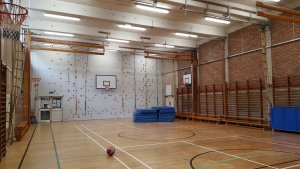Introduction
This blog differentiates Lighting Retrofit from simple ‘Replacement.’ It explains why the latter is actually more costly for business.
Fact: Today’s LED lighting technologies are more efficient; they save energy, money and are more environmentally friendly.
Fiction: You can simply replace earlier technologies with LEDs.
- Answer: With simple replacement, the lighting might actually deliver light in some form. However, we OFTEN find that the result is not fit-for-purpose; and we fix many of these.
Obviously, You Want To Upgrade to LEDs
Let’s say you want to replace your old lighting with newer LEDs. It’s important that you bear the following in mind.
Your initial designers designed and created a lighting solution that was fit-for-purpose, with uniform and even lighting – to meet specific objectives. They needed to consider:
- the lighting dynamics of the technology they were using
- what lighting intensity and spread was needed for the environment and usage
- what lighting was able to be positioned at what location
- lighting distribution technologies (diffusing, lenses, reflectors, etc.)
- and more…..
Of course this is obvious; actually nothing has changed. I like this US county lighting spec. It is actually a good read, explaining why there is even more to consider these days.
So, retrofit to improve and save and here’s why.
Lighting Retrofit is A Combination Of Science, History and Even Art
I shall explain why this heading is not contentious, but valid.
We first need to be clear on the differences between the following:
- Lighting Replacement is just as it says, with scant thought to the lighting needs of the environment.
- Lighting Retrofit means considering all aspects of lighting (and the earlier design) to meet the organisation’s and users’ lighting objectives.
When organisations want to upgrade their lighting, they should be aware that:
- LEDs have completely different lighting characteristics.
- LEDs are physically different, therefore positioned differently in the luminaire housing.
- The direction and intensity of the lighting is different.
- The existing lighting distribution technologies are often no longer effective.
- The environment might have changed, e.g. new offices and other structures.
- etc..
Simple replacement lighting results in some areas having poor or bad lighting and others over-lit. Whatever the case, the users of that environment suffer. The bad results are obvious. Other times, the areas just don’t feel right. Whatever the case, if it affects your employees, their productivity will be affected. Your revenues will be affected if it’s your customers.
So when I talk about lighting retrofit:
- Science. I mean understanding both the earlier and newer technology used as well as the environment to be lit.
- History. We need to understand the background to the original plan. This requires extensive knowledge of earlier lighting technology and rationale, as well as the new.
- Art. This just means applying decades of hard-earned and shared experience to the solution.
Lighting Retrofit Real-Life Example
So far, I have just looked at generic issues and challenges of simple replacement lighting. However, here’s (below) a simple real-life example of what I mean.
The owners of a large multi-story car park replaced existing CFLs with ‘comparable’ LEDs. The lumens were the same and the LEDs physically fitted in the old housings.
The result of the replacements were light and dark strips running through the car park. The reason soon became obvious to us, once we understood the background and actions taken.
The initial lighting was housed within a recessed luminaire housing. The new LED arrays offered light at 180o. The thinking was that the LEDs could give a stronger and more defined light. This was true – in part. The bright bands were brighter, but at the cost of the dark areas.
The striping issue was not caused by one problem, but a combination, principally:
- The light coming from each of the housings was at a narrower angle, thus reducing the spread (being thinner, they were housed further inside the housings).
- The earlier CFLs offered light at 360o. The new LED arrays offered light at 180o, meaning that they could not take advantage of the reflectors.
- The new reflector had a shiny finish. The old reflector had a ‘hammered’ finish to further diffuse and reflect the light.
(OUR Solution. We embedded 360o LEDs optimally inside the original fittings. The retrofit lighting solution was quicker, cheaper and delivered superior lighting than the ‘replacements’)
Closer to Home – Examples
How often have you been blinded by a strong floodlight while walking, or even driving past a work-site? People place LEDs ‘where they always have done,’ when they should be placed higher up due to a narrower spread of light.
Here’s another few examples of what I mean:
- Modern street lights are positioned higher (for the above reason).
- Your new LED bathroom light creates a shadow, making it more difficult to shave.
- One of my pet hates is some hotels. They replace lights with LEDs, without thought. Yes the carpets are wonderfully lit up the middle. However, the dull edges and walls offer a dreary impression (when you next see this, you’ll know what I mean)
In Summary
To the unknowing, it’s all too easy to compare a catalogue of ratings and specifications and just replace.
For we veterans of the industry, it’s all about understanding the original designs and how they might be adapted to retrofit lighting in an industry of rapidly changing technologies.
Chalmor offers complete Retrofit Lighting Solutions and we can help you.
Contact us at: https://www.chalmor.co.uk/contact/
Email: info@chalmor.co.uk

